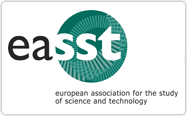Outbreaks and the management of ‘second-order friction’: Repurposing materials and data from the health care and food systems for public health surveillance
Abstract
In the US, the public health system plays a key role in identifying unsafe food in the food supply. This identification work (public health surveillance) entails piecing together and reworking materials and data from the health care and food sectors to identify the ultimate cause of the problem. As such, the public health system depends heavily on infrastructures built for other purposes to achieve its goals. Using the case of foodborne outbreak detection, this article enhances the ethnographic analysis of second-order systems by incorporating the concepts of ‘repurposing’ and ‘friction’ to analyze this dependent relationship, the challenges it entails, and the broader sociopolitical and ethical consequences of connecting heterogeneous infrastructures. I examine how actors within the second order system of public health conduct the practical work of repurposing materials and data from other sectors, and grapple with the inescapable presence of ‘second-order friction’ between their system and infrastructures built to achieve other goals.





